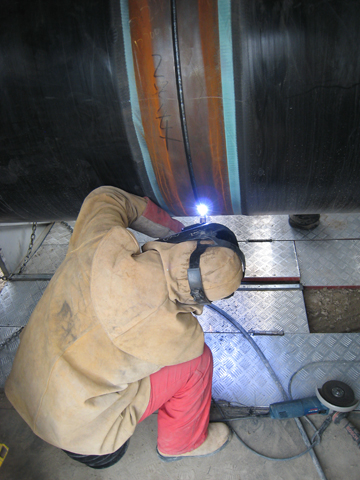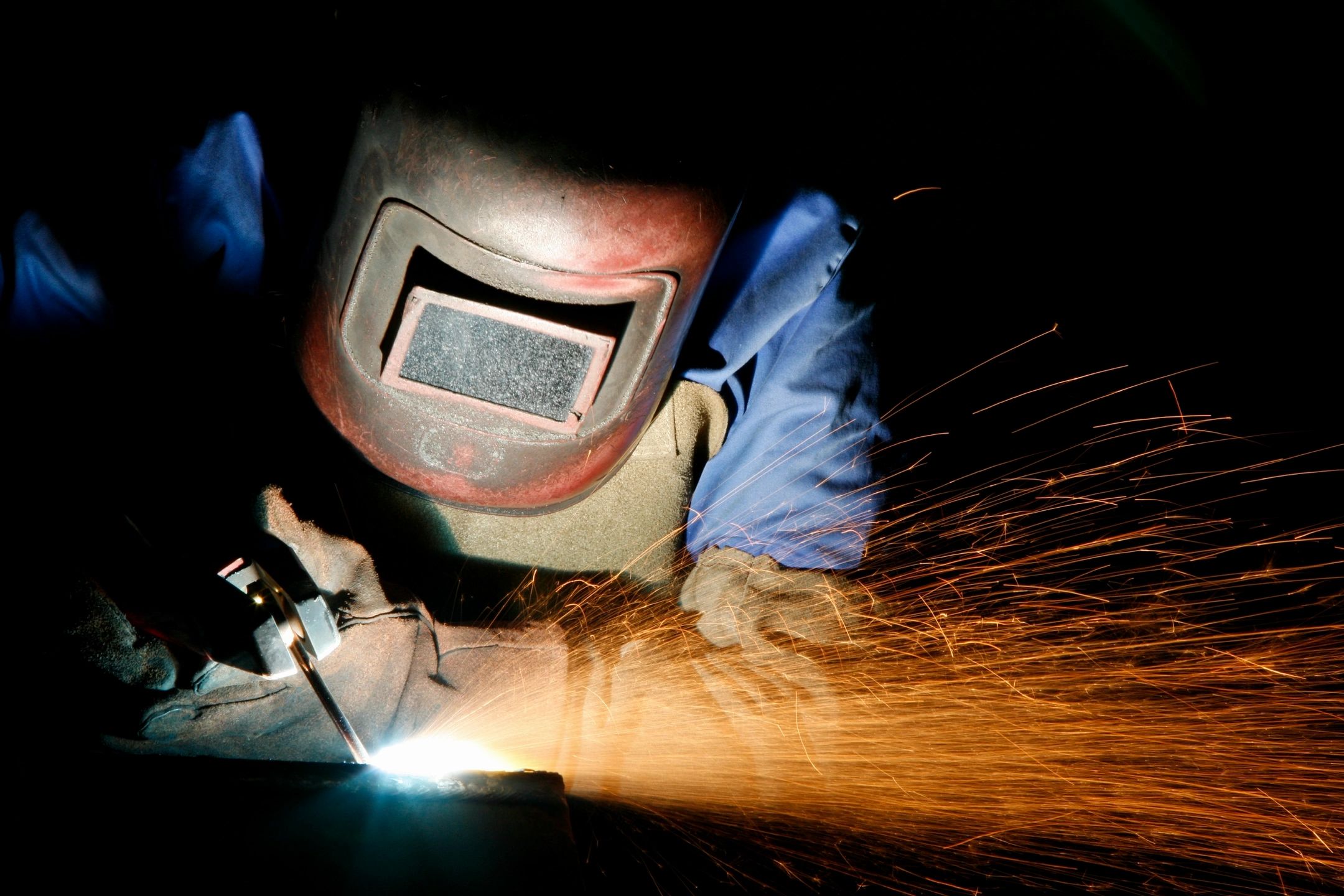Everything about Welding: Key Insights Into Techniques and Finest Practices for Success
Welding encompasses a variety of methods, each matched for specific materials and applications. Understanding these approaches, such as GMAW, SMAW, and TIG, is crucial for attaining suitable results. Additionally, the appropriate tools and security methods can not be ignored. As prep work and repairing play important duties in the welding procedure, understanding these elements can considerably improve the quality of the last item. What are the crucial elements that guarantee an effective weld?
Comprehending Different Welding Methods
Welding techniques encompass a range of approaches, each matched to details applications and products. Among one of the most common methods are Gas Steel Arc Welding (GMAW), Protected Metal Arc Welding (SMAW), and Tungsten Inert Gas Welding (TIG) GMAW, additionally referred to as MIG welding, is popular for its speed and versatility, making it suitable for thin products. SMAW, or stick welding, is preferred for its simpleness and performance in outside environments, especially with thicker metals. TIG welding provides precision and control, making it ideal for detailed job and non-ferrous metals (Belgrade Fabrication). Each strategy has its special benefits and factors to consider, enabling welders to select the ideal method based upon the task's requirements, product type, and preferred results. Comprehending these methods is vital for successful welding
Crucial Welding Devices and Tools
While various welding strategies require specific abilities, the appropriate devices and tools are similarly essential for attaining high quality results. Essential welding devices includes welding equipments, which vary depending on the technique-- such as MIG, TIG, or stick welding. Safety gear, including aprons, handwear covers, and safety helmets, warranties safety and comfort during the procedure. Furthermore, fixtures and clamps aid safeguard materials in position, ensuring precision in welds. Consumables like welding rods, cord, and protecting gas are likewise critical elements that influence the top quality of the weld. Devices such as cutters and grinders facilitate surface area prep work and post-weld finishing, contributing to a specialist result. Spending in top quality tools inevitably enhances the performance and efficiency of welding jobs.
Safety Practices in Welding
Proper security practices are important in the welding sector to safeguard employees from possible risks. Welders must use suitable individual protective devices (PPE), consisting of safety helmets with proper shading, gloves, and flame-resistant clothes. Appropriate air flow is essential to reduce direct exposure to hazardous fumes and gases created during the welding process. Additionally, workers ought to be educated in the correct handling of welding devices to avoid mishaps. Fire precaution, such as maintaining combustible products away from the welding area and having fire extinguishers conveniently offered, are necessary. Regular assessments of devices and work areas can aid recognize potential threats prior to they lead to crashes. By sticking to these safety and security techniques, welders can produce a much safer working environment and reduce dangers connected with their profession.
Readying Materials for Welding
Preparing materials for welding is a crucial step that greatly affects the high quality and honesty of the last product (Montana Mobile Welding and Repair Belgrade). Appropriate prep work entails cleansing the surfaces to eliminate contaminants such as rust, dirt, and oil, which can endanger the weld. Strategies such as grinding, fining sand, or using solvents are typically used to accomplish a clean surface. In addition, ensuring that the materials fit with each other snugly is necessary; spaces can bring about weak welds. It's likewise essential to take into account the alignment and positioning of the components, as this will influence the ease of welding and the last outcome. Picking the appropriate filler material and guaranteeing compatibility with the base metals is vital for attaining strong, long lasting welds.
Tips for Getting High-Quality Welds
Accomplishing high-quality welds calls for attention to information and adherence to ideal techniques throughout the welding procedure. Proper joint preparation is crucial, ensuring surface areas are tidy and free from pollutants. Picking the appropriate filler product and welding strategy based upon the base steels is vital for excellent bonding. Maintaining regular travel rate and angle while welding can avoid problems and advertise uniformity. In addition, controlling warm input is vital; too much heat can lead to bending and deteriorated joints. If needed, routinely checking the welds throughout the procedure permits for prompt changes. Employing proper post-weld treatments, such as cleansing and tension alleviation, can improve the durability and stability of the weld, eventually ensuring a successful result.
Troubleshooting Common Welding Issues
Welding typically provides challenges that can influence the high quality and stability of the end product. Usual issues such as porosity, irregular weld grains, and overheating can arise, each requiring specific repairing strategies. Understanding these problems is essential for welders to enhance their skills and attain ideal results.
Porosity Issues Discussed
Porosity can frequently be ignored, it continues to be a critical issue in welding that can jeopardize the integrity of an ended up item. Porosity refers to the visibility of little gas pockets within the weld bead, which can lead and compromise the joint to early failure. This trouble normally arises from contaminants, wetness, or inappropriate shielding gas coverage throughout the welding procedure. To alleviate porosity, welders need to validate that the base materials are completely dry and tidy, make use of proper protecting gases, and keep constant welding parameters. Consistently inspecting the tools and environment can also help identify potential problems prior to they materialize in the weld. Dealing with porosity efficiently is crucial for attaining strong, durable welds that satisfy high quality requirements.

Irregular Weld Beans
Irregular weld beads can greatly influence the quality and toughness of a finished item. Different elements add to this concern, including improper traveling speed, incorrect amperage setups, and inconsistent electrode angles. When the welder moves as well swiftly, a bead may appear slim and lack infiltration, while relocating as well slowly can create too much buildup. In addition, making use of the incorrect amperage can lead to either damaging or too much spatter, both of which concession weld honesty. The welder's method, such as inconsistent lantern motion, can also result in irregular bead appearance. To minimize these argon near me issues, welders need to focus on keeping consistent, controlled activities and guaranteeing appropriate tools setups to achieve harmony in their welds. Uniformity is vital to attaining strong and trusted welds.
Getting Too Hot and Bending Issues
Too much heat throughout the welding process can cause considerable getting too hot and buckling issues, affecting the architectural stability of the workpiece. These issues usually materialize as distortion, which can compromise alignment and fit-up, making more setting up testing. Aspects adding to overheating include the choice of welding parameters, such as voltage and take a trip rate, in addition to the sort of product being bonded. To minimize these issues, welders should preserve constant traveling speed and appropriate heat input while keeping an eye on the work surface temperature. Additionally, preheating or post-weld warmth therapy can assist alleviate anxieties triggered by rapid air conditioning - Montana Mobile Welding and Repair Belgrade Welding. Normal inspection and adherence to ideal techniques are crucial in preventing overheating and guaranteeing the longevity and dependability of bonded frameworks
Frequently Asked Inquiries
What Are the Job Opportunities in the Welding Sector?
The welding market provides diverse profession opportunities, consisting of settings as welders, engineers, educators, and assessors. Professionals can operate in production, building, aerospace, and automobile sectors, gaining from strong need and affordable wages in different roles.
Exactly How Can I Boost My Welding Rate Without Giving Up High Quality?
To boost welding rate without giving up high quality, one must practice efficient methods, maintain tools, optimize setups, and improve hand-eye control. Normal training and seeking responses can additionally greatly add to achieving quicker, high-quality welds.
What Qualifications Are Offered for Welders?
Countless accreditations exist for welders, consisting of those from the American Welding Society (AWS), the National Center for Building Education And Learning and Study wire welding (NCCER), and numerous industry-specific organizations. These qualifications improve employability and show ability proficiency.
Exactly How Does Welding Impact the Features of Metals?
Welding affects the residential properties of metals by altering their microstructure, which can result in changes in stamina, solidity, and ductility. Heat input and cooling prices throughout the process considerably influence these product qualities.
Can I Bonded Dissimilar Metals With Each Other?
